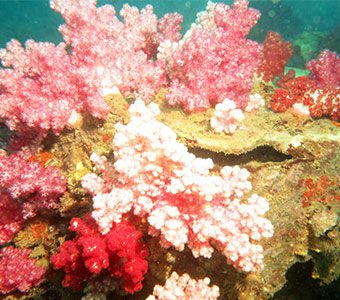We have demonized these creatures, these apex predators, vital for the health of our oceans, almost out of existence. And it’s got to stop now. Let sharks be.
A monumental first took place this week on the small island of Taveuni, Fiji, and Diveplanit guest blogger and fellow Eco Diver, Alice Forrest, was there to take part and document the event for Diveplanit.
We are ending biodiversity week with probably the biggest example of the diverse species that inhabit our oceans: The Whale Shark. So named because it is as big as many whales and like many whales, a filter feeder.
Biodiversity #29 – Mankind!?! Scuba divers can play a significant role in spreading the message that what we do on land impacts what happens in our oceans and that without sustainable practices within fisheries the old adage “There’s plenty more fish in the sea” will simply no longer be true.
The Numb Ray – so called because it can give you a 200V electric shock – which will make your arm go numb! Not to be confused with Numbfish which look more like rays, and less like discarded sacks! Numbfish have a much wider distribution, whereas the Numb Ray species is endemic to Australia.
Biodiversity #27 – Shrimp Goby – A Goby and a Shrimp co-habitating. Here’s the deal: Goby can’t dig his own safety tunnels, so he gets Shrimp to dig, and constantly maintain them – which Shrimp does for most of the day.
Biodiversity #26 – Jellyfish. There are 1,000’s of species of Jellyfish and they are found in all the oceans on earth. Though the English term has been in use since 1794 – they’re not fish, but rather gelatinous zooplankton – free swimming marine animals of the phylum: Cnidaria.
Biodiversity#: Scorpionfish – a fish that can’t swim? Scorpionfish are members of the family Scorpianidae, which includes many of the world’s most venomous species. One genus is the Lionfish, but many of the other genii are bottom-dwellers.
Biodiversity #24 – Titan Triggerfish – the largest of the true triggerfish. Though rarely seen by divers, triggerfish have two dorsal spines: the first larger spine is locked in place by the second shorter spine, and it can only be unlocked by depressing the second ‘trigger’ spine. Hence the family name.
Biodiversity #23 – Feather stars. Like starfish – or more correctly sea stars – they are echinoderms. They are marine animals characterised by a mouth on top surrounded by feeding arms. Compare the sea star which has a mouth on the bottom surrounded by feeding arms.













